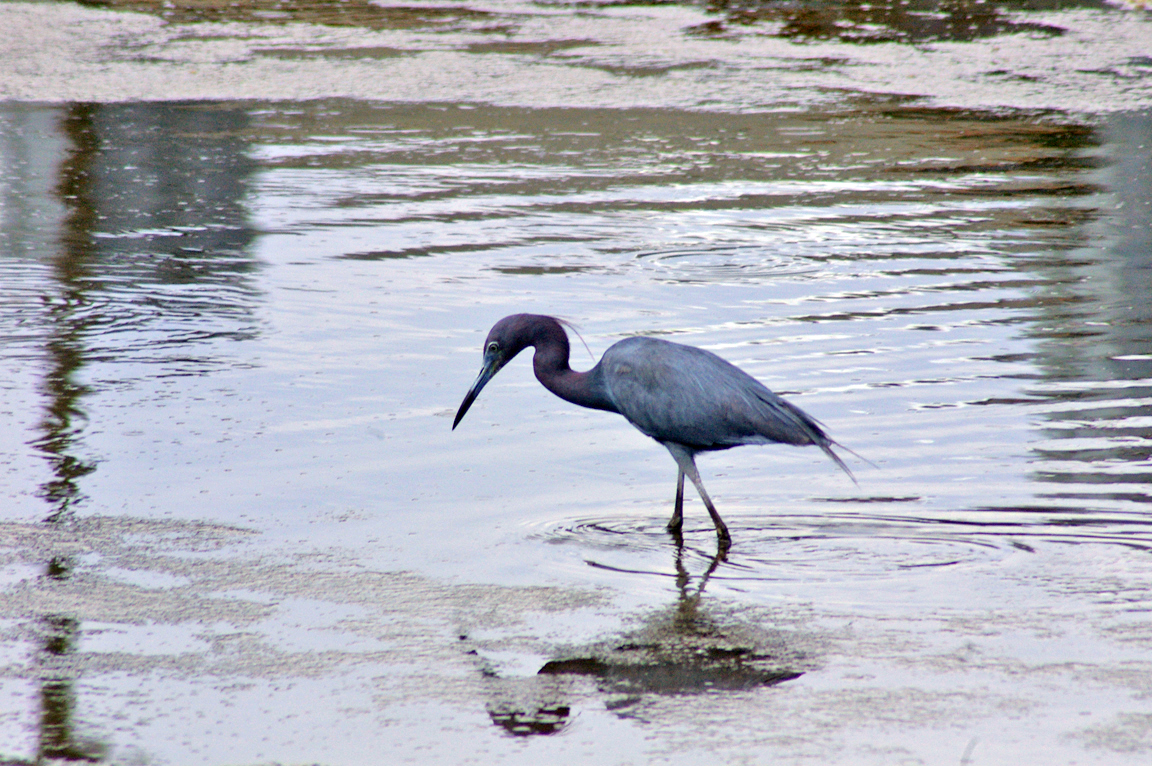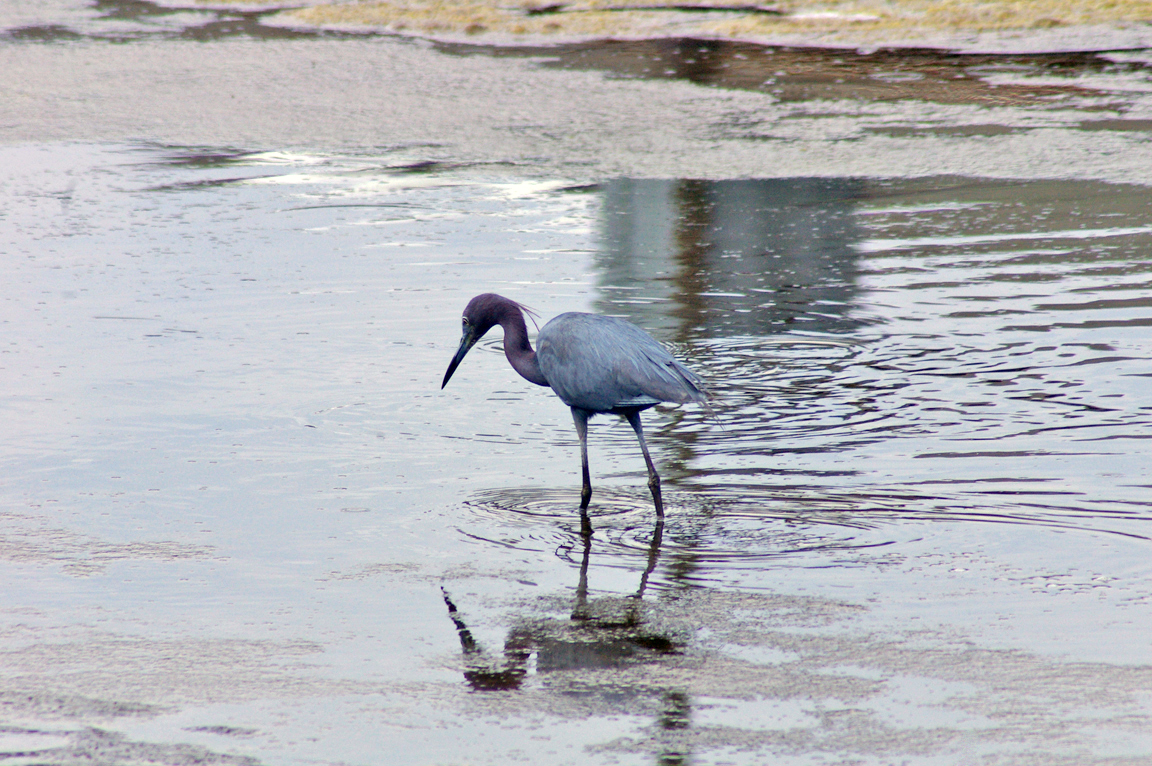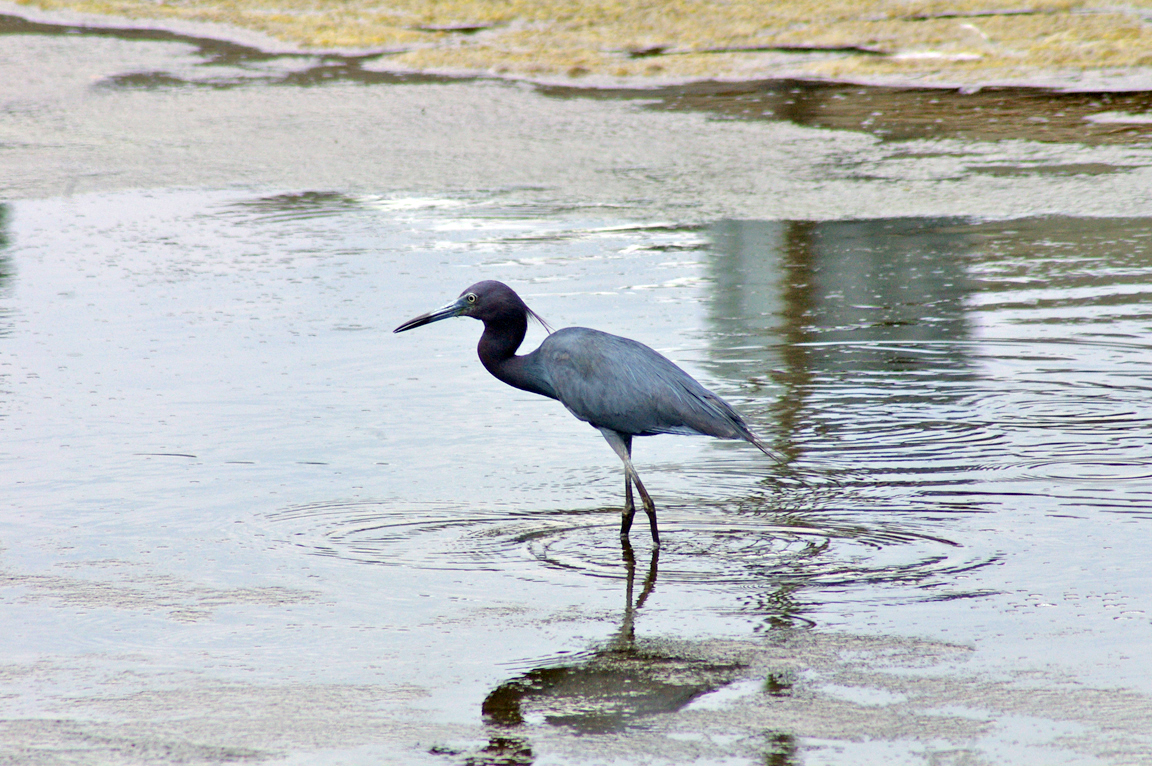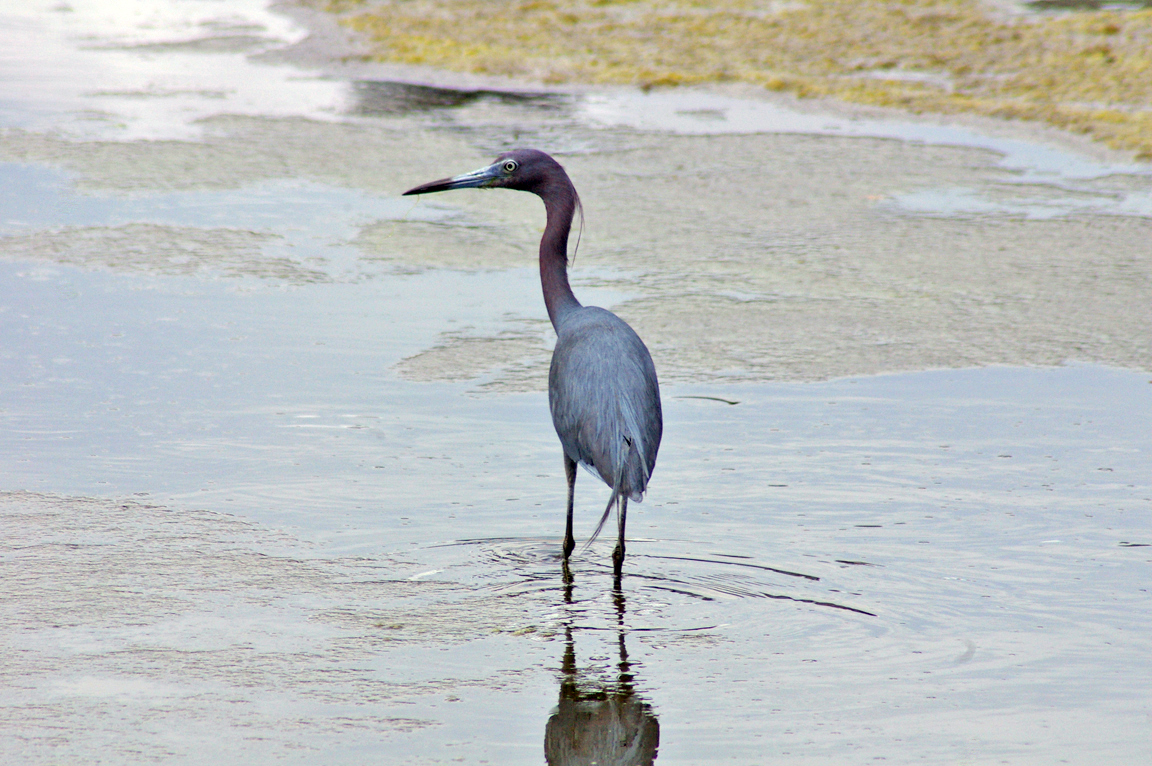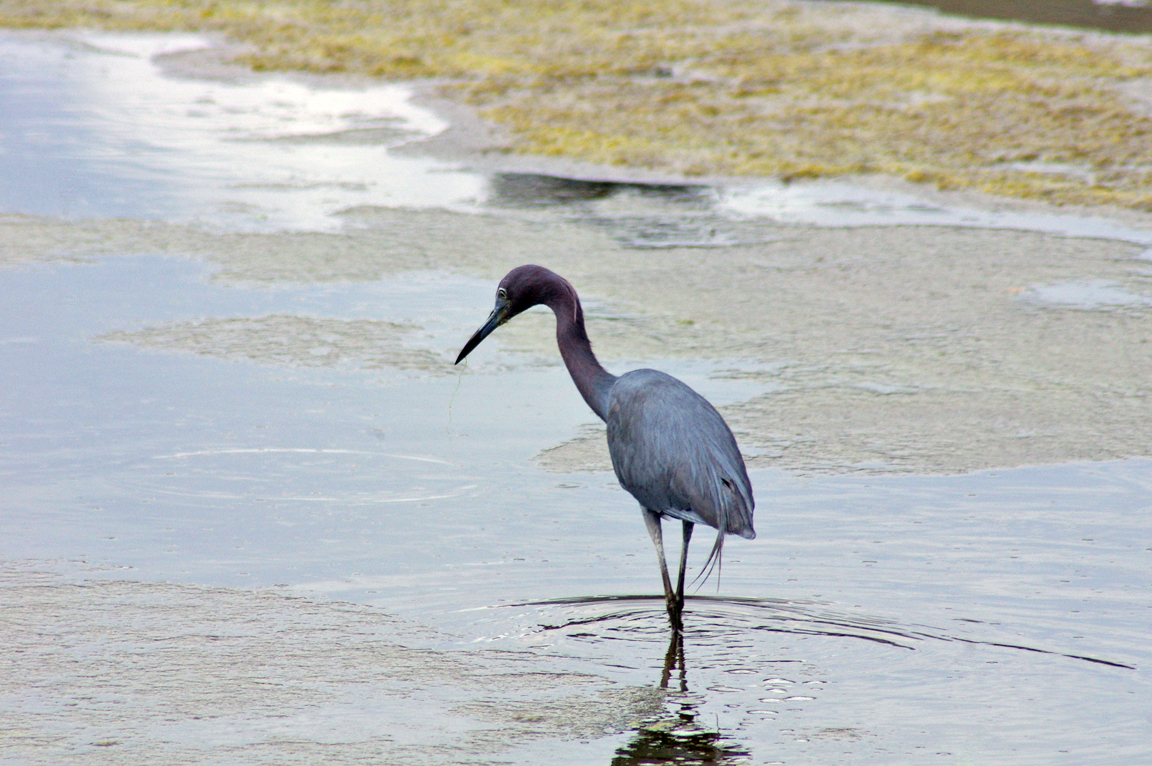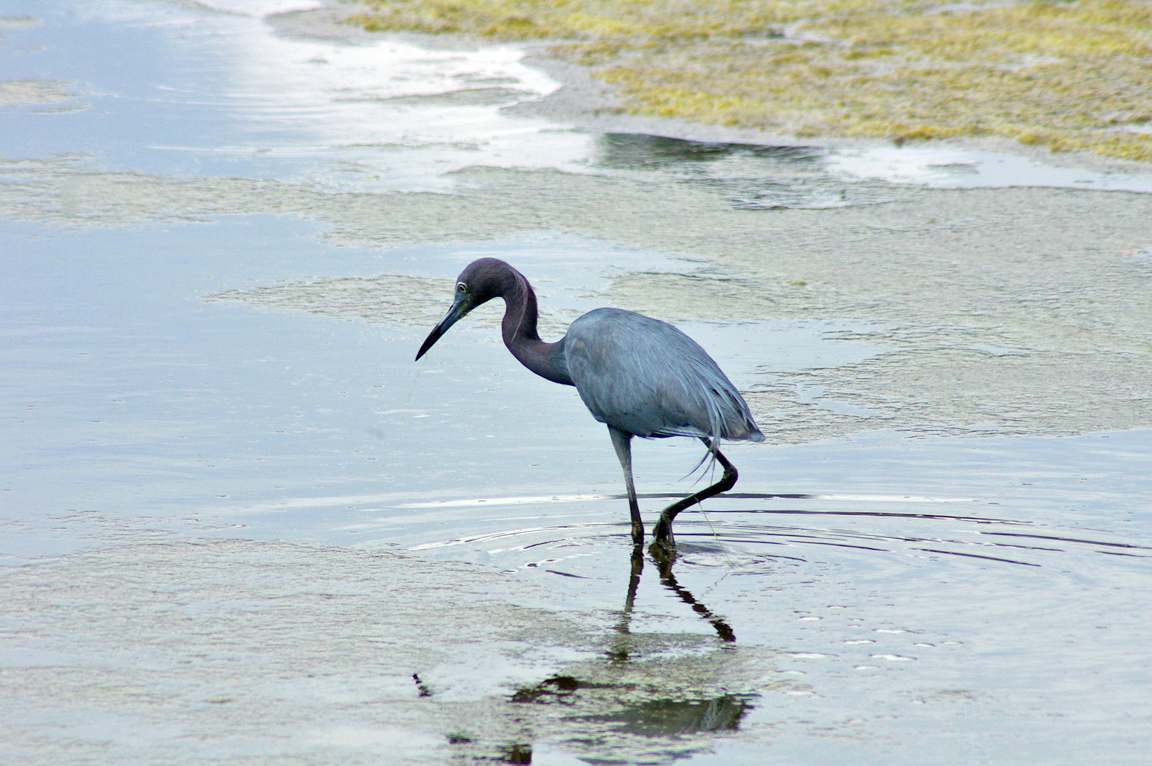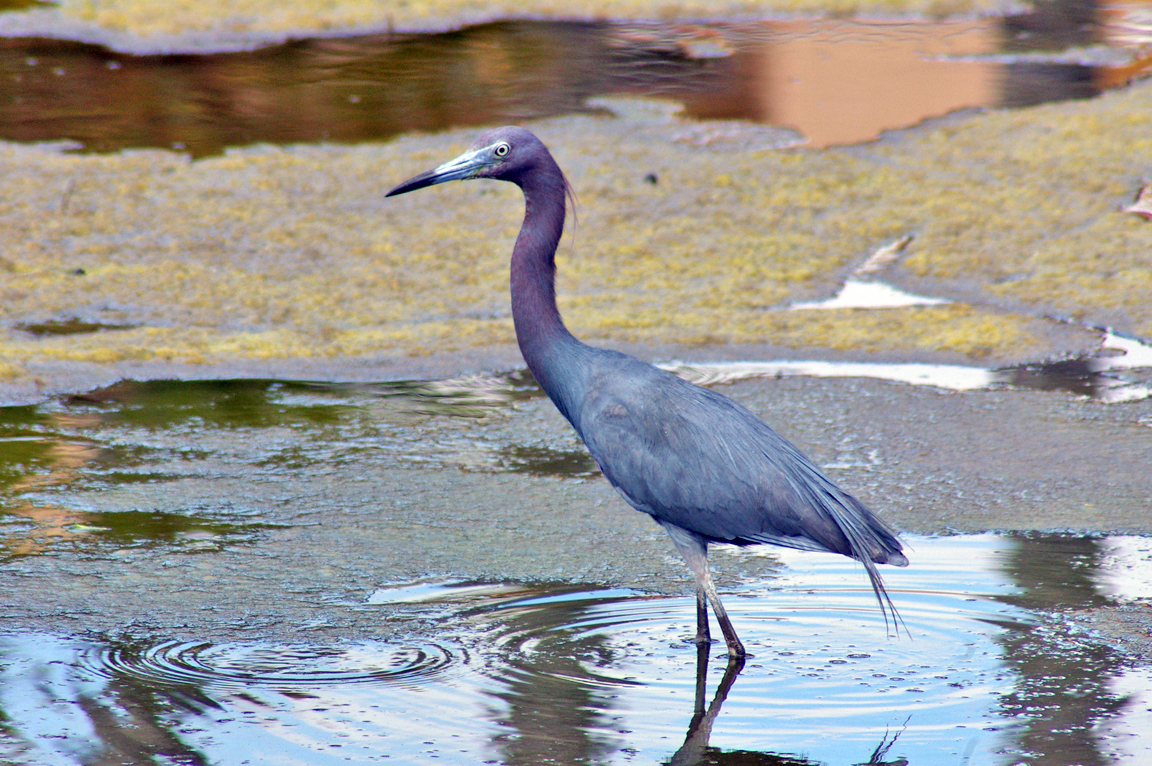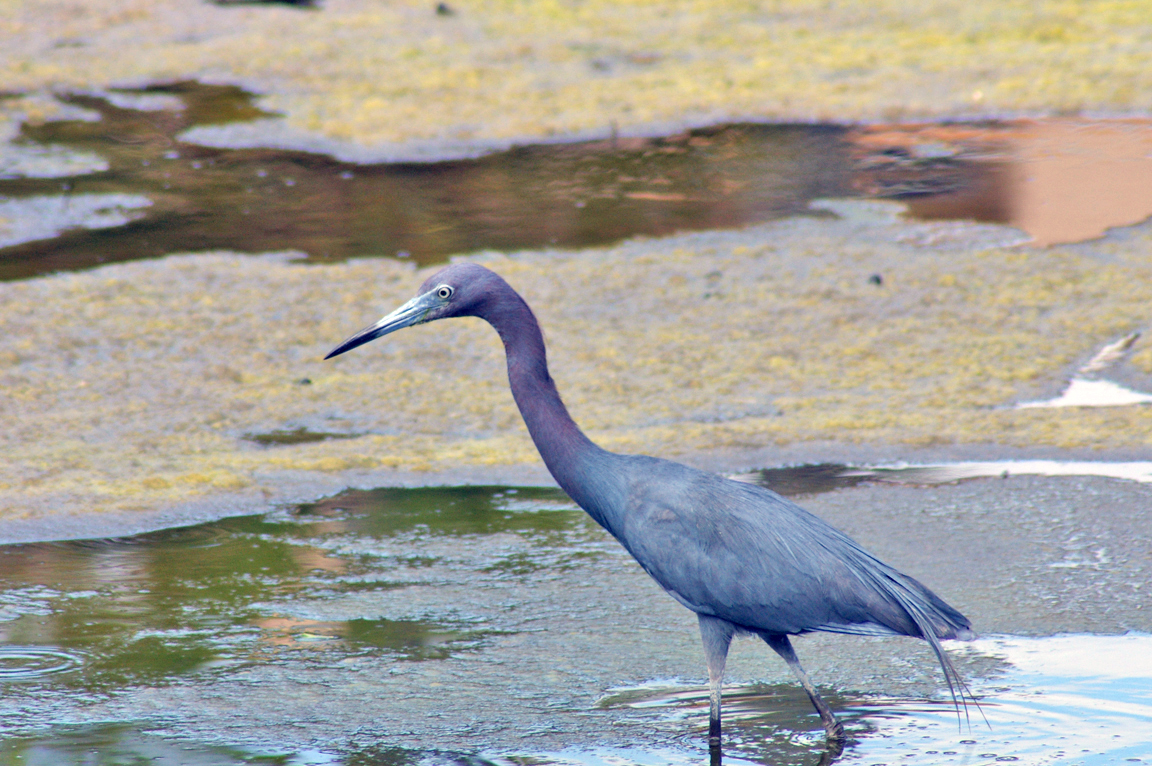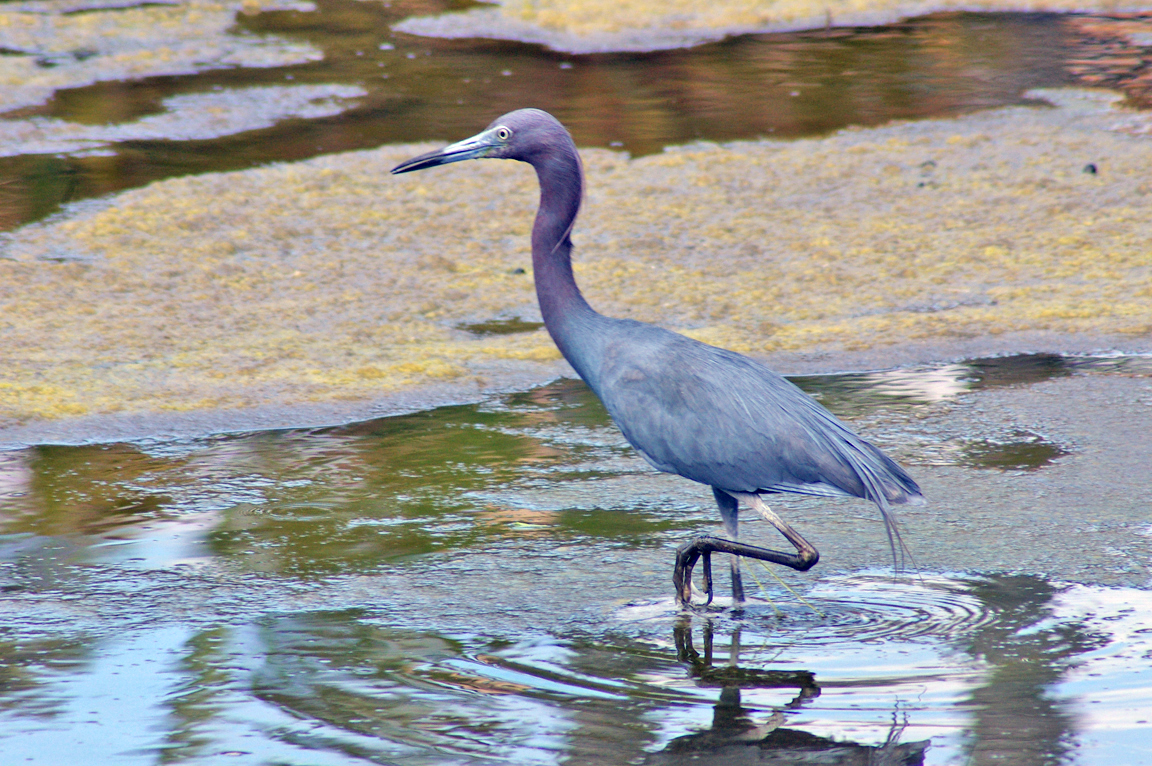|
|
|
 |
Little Blue Heron
|
| Egretta caerulea | |
A smallish heron of the southeastern United States, the Little Blue Heron breeds in various freshwater and estuarine habitats. It is the only heron species in which first-year birds and adults show dramatically different coloration: first-year birds are pure white, while adults are blue.
Interesting Information
The Snowy Egret tolerates the close proximity of white Little Blue Herons more than that of dark Little Blue Herons. A white Little Blue Heron catches more fish in the company of Snowy Egrets than when alone. This relationship may be one reason why young Little Blue Herons stay white for a year. Another advantage of white plumage is that young Little Blue Herons are more readily able to integrate into mixed-species flocks of white herons, thus gaining a measure of protection against predators.
Description
Adult Description
-
Medium-sized, slender heron.
-
All dark.
-
Long neck, bill, and legs.
-
Bill dark.
-
Length Range: 61-74 cm (24-29 in)
-
Weight: 366 g (12.9 oz)
-
Size: Large (16 - 32 in)
-
Color Primary: Blue, Gray
-
Underparts: Dark Gray
-
Upperparts: Dark Gray
-
Back Pattern: Solid
-
Belly Pattern: Solid
-
Breast Pattern: Solid
Sex Differences
Sexes similar.
Immature
White, with pale, black-tipped bill and greenish legs. Enters adult plumage in the first spring after hatching and may be pied white and blue.
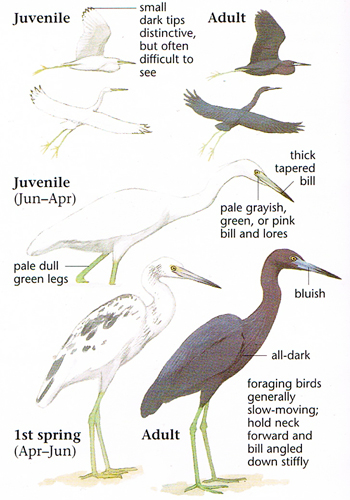
Photo taken from: The Sibley Field Guide by David Allen Sibley
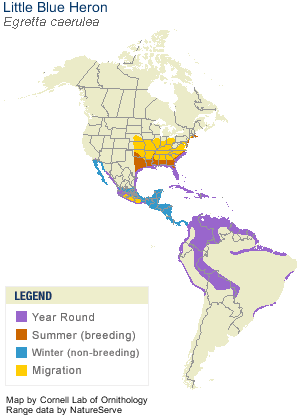
© 2003 Cornell Lab of Ornithology
|
Habitat |
|
Swamps, estuaries, rivers, ponds, and lakes. |
|
Behavior |
|
In courtship, male points bill straight upward and suddenly extends and withdraws neck.Forages slowly and methodically, walking slowly, peering, and moving along to a new spot. |
|
Food |
|
Small fish, amphibians, and aquatic invertebrates. |
Taxonomy
| Kingdom: | Animalia |
| Phylum: | Chordata |
| Subphylum: | Vertebrata |
| Class: | Aves |
| Order: | Pelecaniformes |
| Family: | Ardeidae |
| Subfamily: | Ardeinae |
| Genus: | Egretta |
| Species: | Egretta caerulea |
Similar Species |
|
|
Bird Sound |
|
Does not sing. Calls buzzy; also sharp chips. Wings of adult male make a high, buzzy trill. |
|
Eggs look like this |
|
Photo taken from: ARCTOS Collaborative Collection Management Solution |
